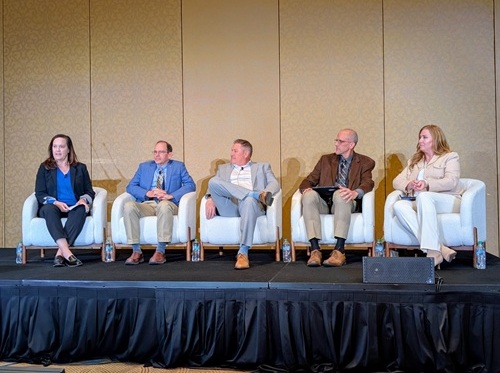At the American Association of State Highway and Transportation Officials 2025 Annual Meeting in Salt Lake City, a knowledge session examined how state departments of transportation are integrating resiliency not only into their infrastructure designs but their organizations as well.
[Above photo by AASHTO]
Melissa Savage, senior policy advisor for engineering services firm Jacobs – the session’s sponsor – moderated a panel discussion that featured Ed Hassinger, director of the Missouri Department of Transportation; Matthew Laufer, state hydraulics engineer for the North Carolina Department of Transportation; Nathan Lee, director of program development for the Utah Department of Transportation; and Aimee Flannery, global principal for transportation risk & resilience at Jacobs.
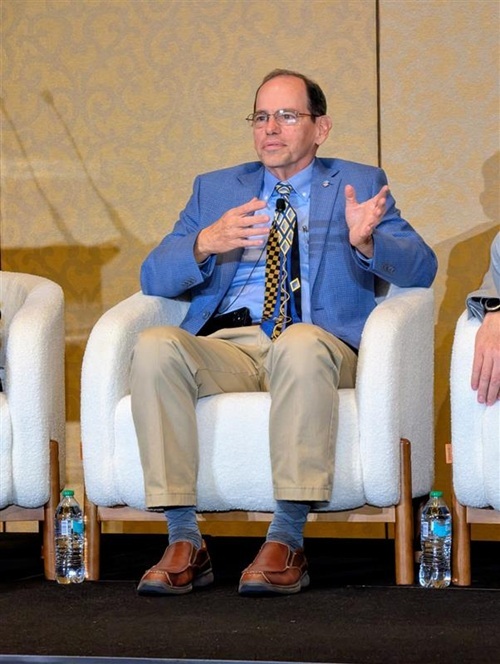
MoDOT’s Hassinger stressed in his remarks that “resilience” is not just a term that applies to infrastructure designs or state DOT operational capabilities – it now also applies to the organizational structure of state DOTs themselves.
“In the seat that I sit in now, I think resilience is more about ‘organizational resilience’ in terms of how we make sure our agency can regenerate itself by bringing in new people and preserving institutional knowledge so we can continue to do the things we’re doing: building infrastructure, plowing snow, maintaining roads, etc.,” he said.
Hassinger recalled that a new Missouri transportation commissioner came into one of the agency’s meetings 15 years ago and said, “Where’s your enterprise risk assessment?”
“And we all kind of looked at each other, like, ‘what is that?’ Now, we do risk assessments on projects; we do them for our operations,” he noted. “But he wanted to see our enterprise risk assessment as ‘anybody of your size and scope of operational activity’ should be doing that.”
Hassinger said MoDOT now regularly engages in enterprise risk assessments: analyzing broad issues facing the organization such as natural disasters, political climate, workforce needs, fraud, etc. “And where ‘workforce’ may have been at the bottom of the list 15 years ago, as it was stable and wasn’t a challenge for us, today it’s like number one or number two because that is the biggest threat to our organization as we sit here today,” he stressed.

Yet Utah DOT’s Lee also emphasized that such “risks” also offer opportunities to make changes that can improve resiliency across a broad array of areas – from internal processes of state DOTs to the infrastructure they oversee.
“I think the reason I bring that up is resilience probably starts as a mindset,” he explained. “I think a good place to start is to think a little bit [about resiliency] in terms of opportunity. And opportunity usually starts when somebody has a goal or an idea [regarding infrastructure] and then we start diving into how to protect it, how to make it safe, how to make it robust, how to make it so that anybody can use it. And that kind of opens a door for us to make improvements.”
NCDOT’s Laufer shared how his perspective on resilience developed from facing a variety of natural hazards – especially coastal hazards to inland flooding.
“It’s about taking what we’ve experienced and then integrating it into our thought process of resilience so we can take a more risk-based approach to how we manage our system,” he said. “Because, when you start thinking about resiliency, you start looking at redundancy, robustness, and resourcefulness – those types of things.”
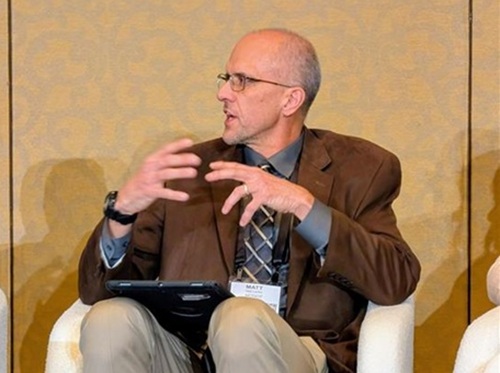
It is also important to make that perspective part of a state DOT’s workplace culture, Laufer pointed out.
“Because resilience forces collaboration within the organization,” he stressed.
“It forces the organization to start looking at future costs as opportunities; addressing threats and identifying ways to save money by doing things that might cost a little bit more incrementally now but have huge benefits later,” he said.
Jacobs’ Flannery noted that her firm is currently working on a manual that will help standardize how resilience gets measured in the transportation sector.
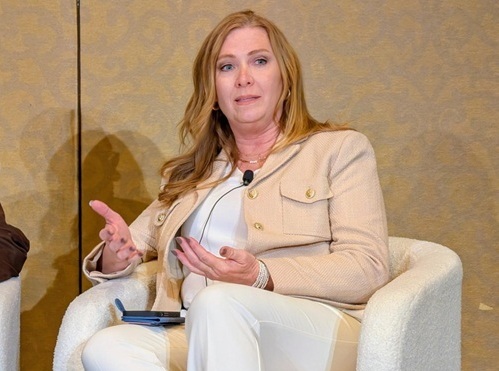
“We are working to develop a standard method of analyzing and estimating the risks to assets from natural hazards, and also the impact of the travelers when those systems go down,” she explained.
“And one of the ways that we’re striving to do it in the manual is to focus on dollars and cents,” Flannery noted.
“For example, what does it mean in terms of dollars and cents to an agency when a bridge goes down or a culvert blows out? What does it mean to the traveler when a section of roadway is shut down for six months? What is the impact to not only the traveler but to the agency?” she said.
“I think once we get that in place as an industry, we’ll be able to kind of open that door to discussing how to truly define resilience a little bit better for everyone,” Flannery added.
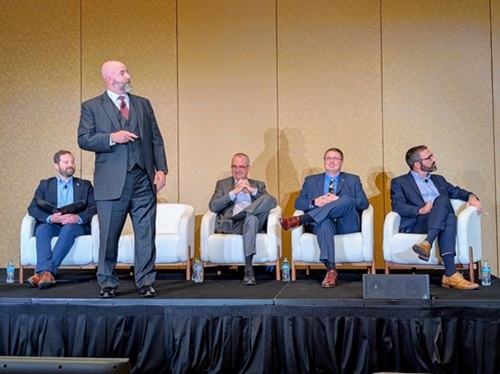 Nation
Nation
How State DOTs Use Data & Analytics to Improve Safety
November 21, 2025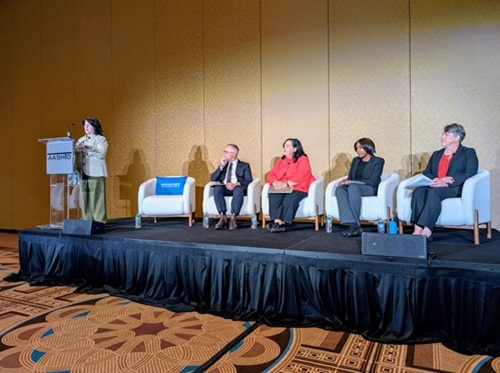 Nation
Nation
